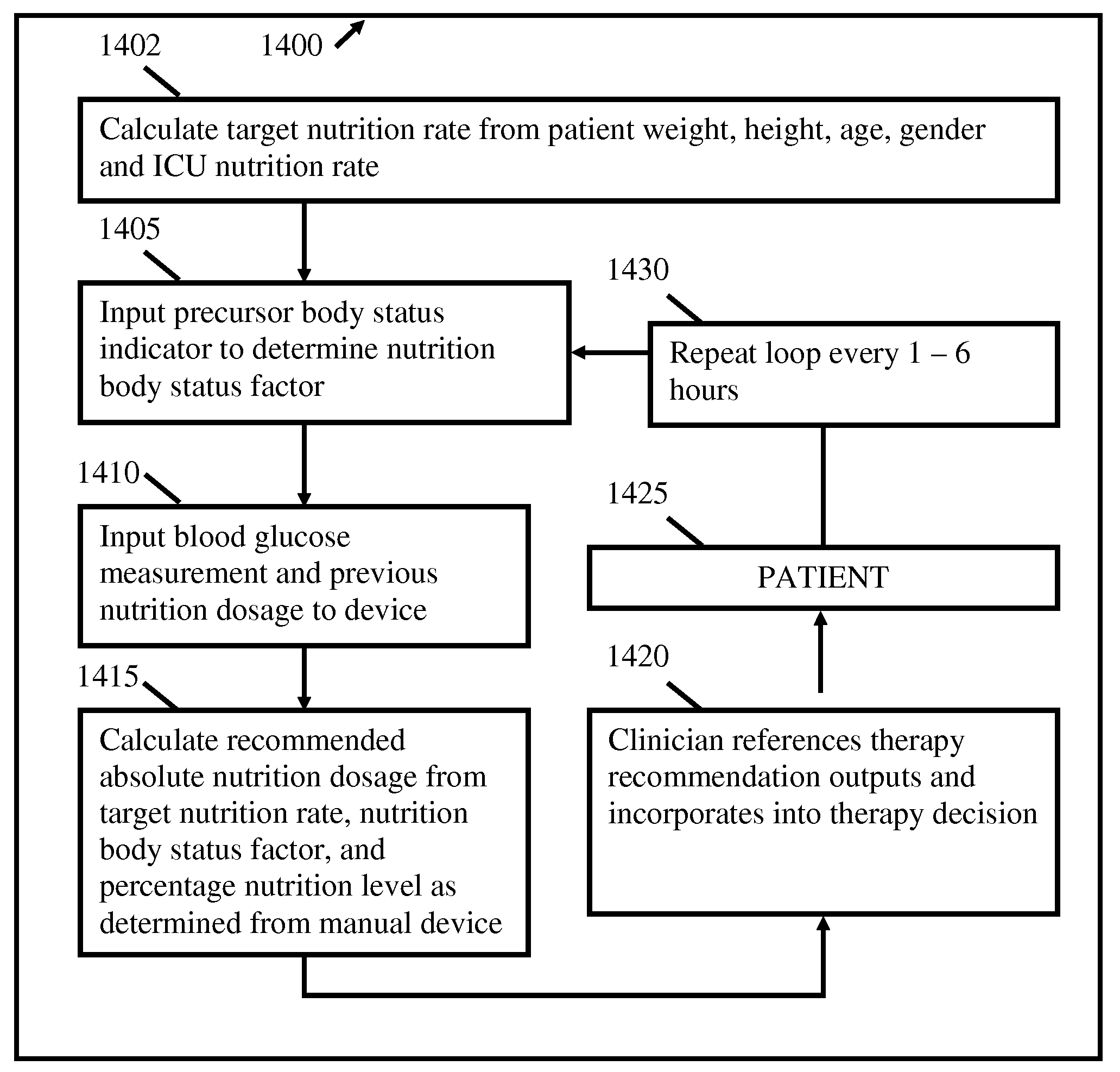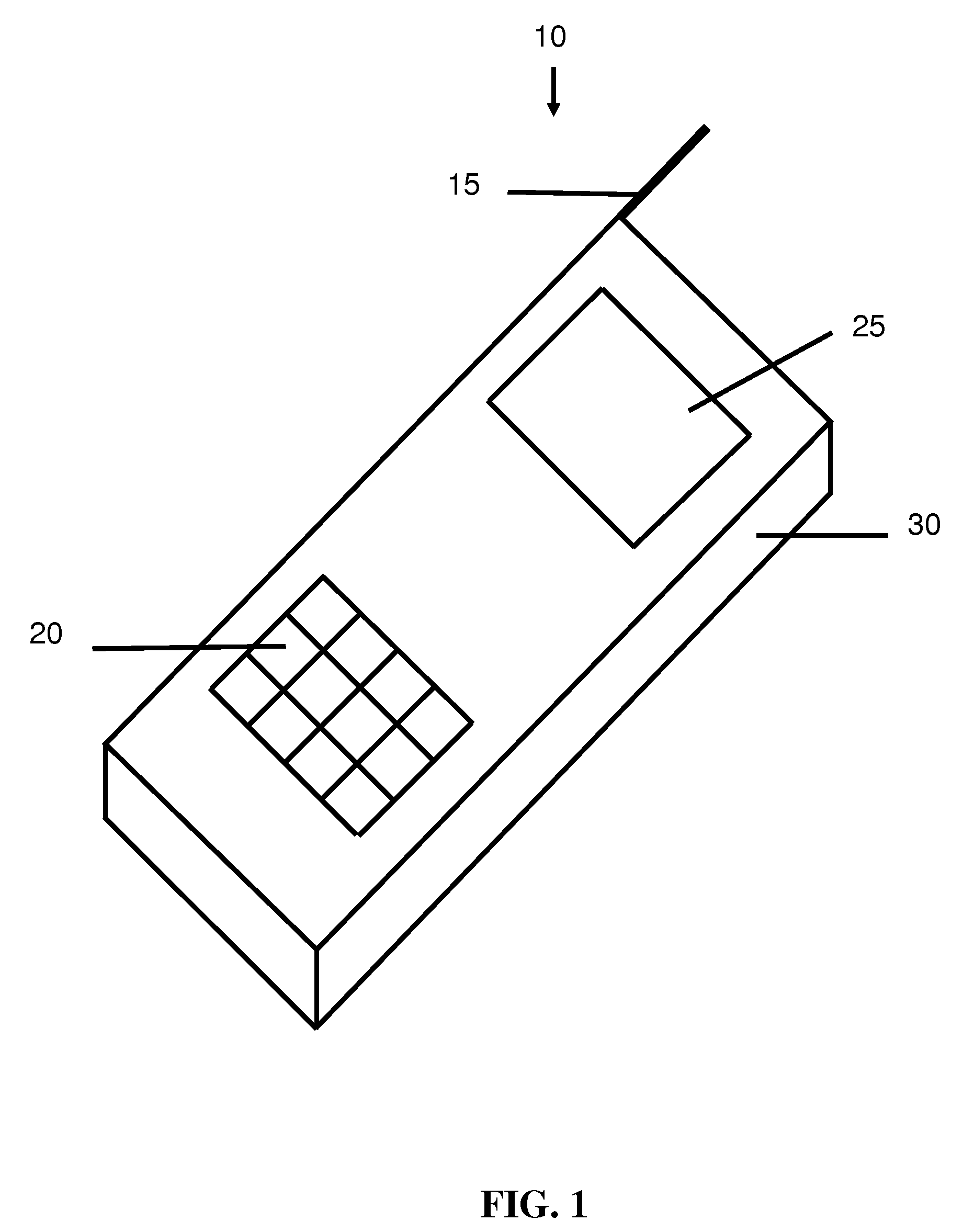Calculation device for metabolic control of critically ill and/or diabetic patients
a metabolic control and diabetes technology, applied in the field of diabetes patients, can solve the problems of increased insulin resistance and body's ability to utilize insulin, and achieve the effect of tight glucose control and reducing the mortality of icu patients
- Summary
- Abstract
- Description
- Claims
- Application Information
AI Technical Summary
Benefits of technology
Problems solved by technology
Method used
Image
Examples
example 1
Development of Glucose-Insulin Kinetic Model
[0288]Initial efforts during the development of the manual calculation approach described herein commenced with critically ill patients undergoing intensive care therapy. The patients studied had high levels of insulin resistance and impaired glucose metabolism associated with severe illness. The data collected on these patients led to the development of an initial glucose-insulin system model based on a physiological insulin model. This model is shown below:
G.=-pGG-SI(G+GE)Q1+αGQ+P(t)(1)Q.=-kI+kQ(2)I.=-nI1+α1I+uexV(3)
Glucose-Insulin Kinetic Model
[0289]Where the inputs and outputs are:[0290]G(t)=Plasma glucose above equilibrium glucose concentration GE[0291]I(t)=Plasma insulin from exogenous input Uex(t)[0292]Q(t)=The effect of infused insulin[0293]k=The effective half-life parameter of insulin[0294]pG=Patient clearance of glucose[0295]SI=Insulin Sensitivity[0296]V=Insulin distribution volume[0297]n=Constant 1st order decay rate of insulin...
example 2
Insulin-Only Modulation Strategy
[0307]Initially, an insulin-only approach was employed to reduce hyperglycemia in the intensive care unit. Protocols for insulin-mediated glycemic control using model-based methods were developed.
[0308]To verify assumptions regarding the employed approaches, clinical trials were performed in which an insulin bolus-based adaptive control protocol was employed. In this protocol, blood glucose level in a patient was measured every 30 minutes, and this value was used to calculate an insulin dosage amount administered intravenously to the patient to reduce blood glucose levels. This control loop was repeated every 30 minutes over the length of the trial. One observation was that insulin-based protocols were severely challenged in the administrations of critical care therapies where insulin resistances were often significantly elevated. In these conditions, the insulin effect saturates at approximately 5-6 U / hr and the body cannot utilize any additional ins...
example 3
Insulin and Nutrition Modulation Strategy
[0310]To overcome the limitations of insulin-only approaches, models were developed using both exogenous insulin and nutrition inputs. Additionally, modifying the carbohydrate intake allows another avenue of reducing blood glucose levels and hence glycemic reduction can be effected by changing the exogenous nutrition inputs. Lower glucose nutrition alone in critical care was shown to result in reductions in average blood glucose levels and improved clinical outcome. By feeding over 66% of the recommended rates of nutrition, it was found that the likelihood of ICU mortality was increased. This suggested that the caloric targets, which were recommended by the American College of Chest Physicians, may be set too high. Additional examples can be found in pediatric and obese subjects. Thus, it was determined that moderate nutrition reductions can improve mortality rates without adversely affecting other clinical outcomes. Additional trials were co...
PUM
 Login to View More
Login to View More Abstract
Description
Claims
Application Information
 Login to View More
Login to View More - R&D
- Intellectual Property
- Life Sciences
- Materials
- Tech Scout
- Unparalleled Data Quality
- Higher Quality Content
- 60% Fewer Hallucinations
Browse by: Latest US Patents, China's latest patents, Technical Efficacy Thesaurus, Application Domain, Technology Topic, Popular Technical Reports.
© 2025 PatSnap. All rights reserved.Legal|Privacy policy|Modern Slavery Act Transparency Statement|Sitemap|About US| Contact US: help@patsnap.com



